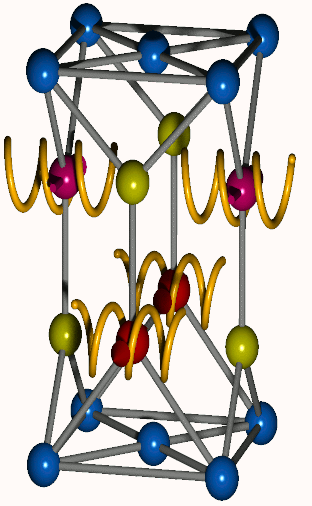International research team demonstrates electrical switching of an antiferromagnet
Ferromagnets and antiferromagnets are the two common forms of magnetically ordered materials. Traditionally we thought that magnetism can be easily controlled and utilized only in ferromagnets. Researchers from the Czech Republic, United Kingdom, and Germany change this perception by demonstrating electrical switching of magnetization in an antiferromagnetic microchip. The work was published online by the journal Science on 14 January 2016 (DOI: 10.1126/science.aab1031).
In ferromagnetic materials, all microscopic magnets sitting on individual atoms, the so-called
spins, have their north poles pointing in the same direction by which they add up into a
macroscopic magnet. Without physically rotating the magnet, the direction of the north pole can be
reversibly switched by running an electrical current through a nearby electromagnetic wire in one
or the other direction. This is the principle of data recording and storage in ferromagnetic media
(see Figure).
Antiferromagnets have the north poles of half of their atomic spins pointing in one direction
and the other half in the opposite direction. Reversing the magnetization in an antiferromagnet
thus requires two sets of electromagnets with opposite currents. Realizing this is unfeasible
because the number of atoms in a magnetic bit is large and the opposite atomic spins are completely
mixed in the antiferromagnetic crystal with their distances typically not exceeding 10
-9 meters.
Instead of the science-fiction scenario of attaching a separate electromagnetic wire next to
each individual atomic spin, members of the team have proposed a year ago a new physical
phenomenon. The explanation of its origin would require a tour to the realm of relativistic quantum
physics but its implication can be pictured in a remarkably straightforward way. When driving a
macroscopic electrical current through certain antiferromagnetic crystals, virtual microscopic
electromagnets form spontaneously at individual atomic sites and act in precisely opposite way on
the sites occupied by the opposite atomic spins of the antiferromagnet. When the electrical current
is switched off, these virtual micro-electromagnets disappear. This provides the practical means
for writing and storing data in an antiferromagnet (see Figure).
The research team has picked CuMnAs as one of the suitable candidate antiferromagnets for
demonstrating the electrical switching, and fabricated experimental memory microchips from this
material. They observe reversible electrical switching, combined with electrical readout, at room
temperature and with writing currents comparably low to those used in commercial ferromagnetic
memories.
“In contrast to ferromagnets, information stored by antiferromagnetic materials cannot be
accidentally wiped even by large magnetic fields. Moreover, antiferromagnetic materials do not
produce stray magnetic field, eliminating the possibility of unintentional magnetic ‘cross-talk’
between neighboring memory elements, and also of secure data being stolen by using common magnetic
scanners. We have already demonstrated these favorable characteristics of antiferromagnets for
digital data storage in our present work. Another foreseen advantage yet to be established is the
speed by which information can be written in antiferromagnetic memories. Its physical limit is
100-1000 times higher than in ferromagnets,” says Tomas Jungwirth from the Czech Academy of
Sciences.
14 Jan 2016








